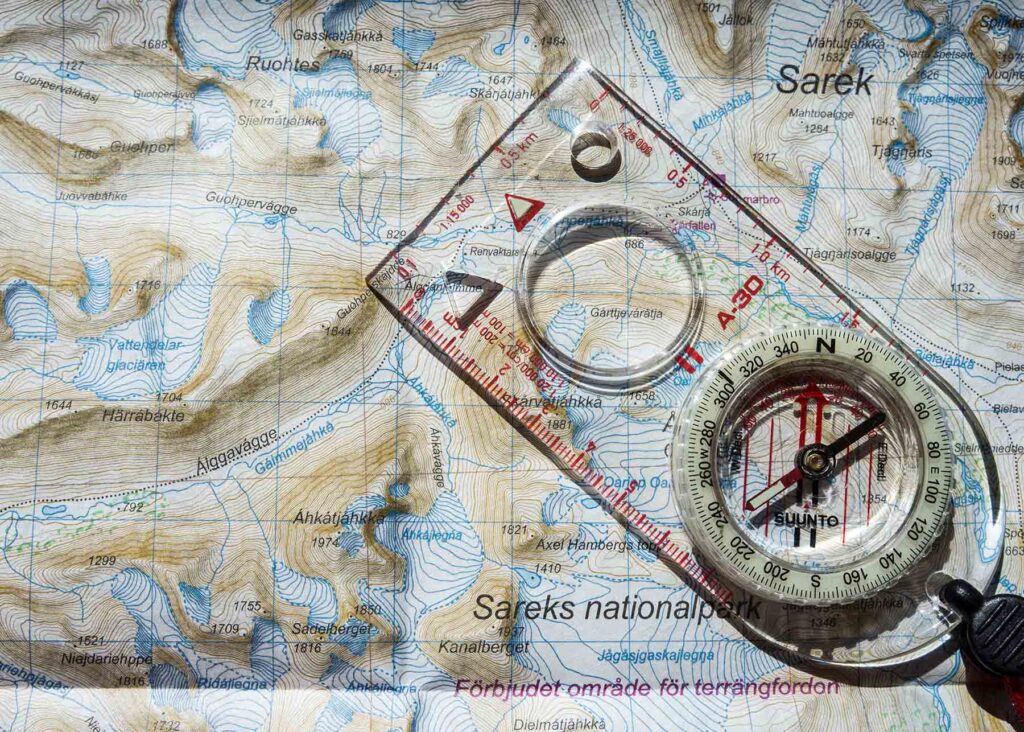
Topographic surveys are a specialized branch of land surveying that focuses on capturing the three-dimensional characteristics of the earth’s surface.
In this article, we’ll explore:
- What is a topographic survey?
- Topographic survey definition
- Benefits of topographic surveys
- Do I need a topographic survey?
- Cost of a topographic survey
- Best drones for topographic surveys
- Topographic survey providers
What is a topographic survey?
A topographic survey, also known as a topo survey or contour survey, is a specialized type of land survey that focuses on capturing the three-dimensional features of the earth’s surface, both natural and man-made. The primary objective of a topographic survey is to create an accurate representation of the terrain, including its elevations, slopes, depressions, and other physical attributes.
Topographic surveys are essential in various industries and applications, such as construction, urban planning, environmental management, and transportation infrastructure development. By providing detailed information about the site’s characteristics, topographic surveys enable engineers, architects, planners, and other stakeholders to make informed decisions, assess potential challenges, and design solutions that consider the unique attributes of the landscape.
During a topographic survey, surveyors collect data on a range of features, including:
- Elevations: The heights of various points on the earth’s surface, typically expressed as a vertical distance above a reference point, such as mean sea level.
- Contours: Lines connecting points of equal elevation, which help illustrate the shape and slope of the terrain on a two-dimensional map.
- Natural Features: Elements such as rivers, lakes, streams, forests, hills, valleys, and rock formations.
- Man-Made Features: Structures and facilities like buildings, roads, bridges, utility lines, fences, and walls.
- Boundaries: Property lines, easements, and rights-of-way that define the legal limits and ownership of the land.
To perform a topographic survey, surveyors use a combination of advanced tools and techniques, such as total stations, GPS/GNSS receivers, levels, 3D laser scanners, and aerial surveying methods like drones or LiDAR. The collected data is then processed, analyzed, and presented in various formats, including topographic maps, digital terrain models (DTMs), and geographic information systems (GIS).
In summary, a topographic survey is a crucial tool for capturing the three-dimensional characteristics of the earth’s surface, providing valuable information that guides the planning, design, and execution of projects across numerous industries. By understanding the terrain and its features, professionals can make better decisions and develop sustainable solutions that respect the natural environment and enhance the built environment.
Topographic survey definition
A topographic survey, often referred to as a topo survey or contour survey, is a type of land survey that focuses on mapping the three-dimensional features of the earth’s surface, including both natural and man-made elements. The primary goal of a topographic survey is to accurately represent the terrain, its elevations, slopes, and other physical attributes. These surveys are essential in various industries such as construction, urban planning, environmental management, and transportation infrastructure development, providing detailed information about the site’s characteristics to aid in informed decision-making and efficient project design.
Benefits of topographic surveys
Topographic surveys offer several benefits that make them invaluable for various industries and applications, including construction, urban planning, and environmental management. Some of the key benefits of a topographic survey are:
- Informed Decision-Making: By providing a detailed representation of the terrain and its features, topographic surveys help stakeholders make informed decisions related to site selection, project design, and resource allocation.
- Accurate Project Design: Topographic surveys enable engineers, architects, and planners to develop designs that take into account the unique attributes of the landscape, ensuring that projects are tailored to the specific site conditions.
- Cost and Time Savings: Identifying potential challenges and opportunities in the early stages of a project can lead to more efficient construction processes, reducing the likelihood of costly mistakes, delays, or redesigns.
- Risk Management: Understanding the existing site conditions, such as slopes, drainage patterns, and soil characteristics, helps project teams identify potential risks and develop mitigation strategies to ensure the safety and stability of the project.
- Regulatory Compliance: Many jurisdictions require topographic surveys as part of the permitting and approval process for development projects. These surveys provide the necessary information to demonstrate compliance with local regulations and guidelines related to grading, stormwater management, and environmental protection.
- Environmental Impact Assessment: Topographic surveys help identify sensitive natural areas, such as wetlands, floodplains, or endangered species habitats, allowing project teams to minimize adverse impacts on the environment and develop sustainable solutions.
- Boundary Verification: While not their primary purpose, topographic surveys can also help verify property boundaries, easements, and rights-of-way, ensuring that projects do not encroach on neighboring properties or violate legal restrictions.
- Asset Management: Topographic surveys can serve as a valuable tool for asset management, helping organizations track changes in their land holdings, monitor infrastructure conditions, and plan maintenance or improvement projects.
In summary, topographic surveys offer numerous benefits that contribute to the success of projects across various industries. By providing accurate, detailed information about the earth’s surface and its features, these surveys enable informed decision-making, efficient project design, risk management, and regulatory compliance, ultimately leading to cost savings, time efficiencies, and sustainable development.
Do I need a topographic survey?
Whether you need a topographic survey depends on the nature of your project, its location, and the specific requirements of local authorities and stakeholders. However, a topographic survey is often necessary or highly recommended in the following situations:
- Construction and Development: For new construction, expansion, or renovation projects, a topographic survey provides crucial information about the site’s characteristics, allowing engineers, architects, and planners to develop accurate designs tailored to the existing terrain.
- Land Planning and Subdivision: When subdividing land or planning large-scale developments, a topographic survey helps determine the best layout for roads, utilities, drainage systems, and building lots, considering the unique features of the landscape.
- Environmental Assessments: If your project involves assessing the environmental impact or developing strategies to protect sensitive natural areas, a topographic survey can provide valuable data on the existing conditions, such as wetlands, floodplains, or endangered species habitats.
- Flood Risk Analysis: In areas prone to flooding or with specific drainage patterns, a topographic survey can help assess flood risks and inform the design of effective stormwater management systems.
- Permitting and Regulatory Compliance: Local authorities may require a topographic survey as part of the permitting and approval process for development projects, ensuring compliance with regulations related to grading, erosion control, and environmental protection.
- Infrastructure Projects: For transportation, utility, or other infrastructure projects, a topographic survey can help identify potential challenges, such as steep slopes or unstable soils, and inform the design of safe and efficient systems.
- Boundary Verification: While not the primary purpose of a topographic survey, it can also be useful for verifying property boundaries, easements, and rights-of-way, avoiding potential disputes or encroachments.
If you are unsure whether you need a topographic survey for your project, it is a good idea to consult with a professional surveyor, engineer, or architect who can assess your specific needs and provide guidance based on their expertise and experience.
If you’re based in Colorado, consider reaching out to our team of professional land surveyors at Roaring Fork Engineering. We’re happy to answer your topographic survey questions and examine your specific case in detail.
Cost of a topographic survey
The cost of a topographic survey can vary significantly depending on several factors, such as the size and complexity of the site, the level of detail required, the location and accessibility of the property, and the specific requirements of your project. Here are some factors that can influence the cost of a topographic survey:
- Site Size and Complexity: Larger sites or those with more complex terrain features (e.g., steep slopes, dense vegetation, or numerous man-made structures) typically require more time and effort to survey, resulting in higher costs.
- Level of Detail: The amount of detail required for the survey, such as the density of elevation points or the inclusion of additional features like utility lines, can affect the overall cost. More detailed surveys generally take longer to complete and may require specialized equipment, leading to increased costs.
- Location and Accessibility: The cost of a topographic survey can be influenced by the property’s location and accessibility. Remote sites or those with difficult access (e.g., steep or unstable terrain) may require additional travel time, specialized equipment, or safety precautions, increasing the cost of the survey.
- Project Requirements: Specific project requirements, such as adherence to local regulations or industry standards, can also impact the cost of a topographic survey. For example, projects that require high-precision measurements or additional documentation may result in higher costs.
- Professional Fees: The fees charged by professional surveyors or surveying firms can vary based on their experience, expertise, and the local market. It is essential to obtain quotes from multiple providers to ensure you receive a fair and competitive price for your topographic survey.
Given these variables, it is challenging to provide a precise cost estimate for a topographic survey without assessing the specific details of your project. To obtain an accurate quote, it is recommended to consult with professional surveyors who can evaluate your needs and provide a tailored estimate based on the unique characteristics of your site and project requirements.
Best drones for topographic surveys
Drones, also known as Unmanned Aerial Vehicles (UAVs), have become increasingly popular for topographic surveys due to their efficiency, accuracy, and ability to access hard-to-reach areas. There are several drones available in the market that are well-suited for topographic surveys. Here are some of the best options:
- DJI Phantom 4 RTK: The DJI Phantom 4 RTK is a popular choice for topographic surveys due to its high-resolution camera, real-time kinematic (RTK) GPS module, and centimeter-level positioning accuracy. This drone is suitable for small to medium-sized projects and offers excellent performance and ease of use.
- senseFly eBee X: The senseFly eBee X is a fixed-wing drone designed for large-scale mapping and surveying projects. It features long flight times, high-resolution cameras, and the ability to carry various payloads, including multispectral and thermal sensors. The eBee X is known for its durability, precision, and ability to cover vast areas efficiently.
- Parrot Anafi USA: The Parrot Anafi USA is a versatile quadcopter that features a high-resolution camera with a 32x zoom, making it ideal for detailed topographic surveys. It also has thermal imaging capabilities, allowing for additional applications such as infrastructure inspection and environmental monitoring.
- DJI Matrice 300 RTK: The DJI Matrice 300 RTK is an advanced drone platform designed for professional surveying and mapping applications. It offers exceptional flight time, payload capacity, and versatility, with support for various sensors, including LiDAR and high-resolution cameras. The Matrice 300 RTK is also equipped with an RTK GPS module for precise positioning.
- Microdrones mdLiDAR1000 or mdLiDAR3000: These are professional-grade UAVs specifically designed for LiDAR-based topographic surveys. With their integrated LiDAR sensors and high-precision GNSS receivers, these drones offer accurate and efficient data collection for large-scale surveying projects.
When selecting a drone for topographic surveys, it is essential to consider factors such as the project’s size and complexity, the required level of accuracy, the type of terrain, and any specific sensor or payload requirements. Additionally, ensure that the chosen drone complies with local regulations and safety guidelines related to UAV operations.
Topographic survey providers
In conclusion, topographic surveys play a crucial role in various industries and applications, providing detailed information about the earth’s surface and its features that enable informed decision-making, efficient project design, and sustainable development. As technology continues to advance, tools like drones and LiDAR are revolutionizing the way topographic surveys are conducted, making them more accurate, efficient, and accessible.
If you’re in need of topographic surveying services for your next project, consider partnering with Roaring Fork Engineering. Our team of experienced professionals is dedicated to delivering high-quality, reliable survey data that will help you achieve your project goals and ensure long-term success. Contact us today to learn more about our topographic surveying services and how we can support your project needs.

